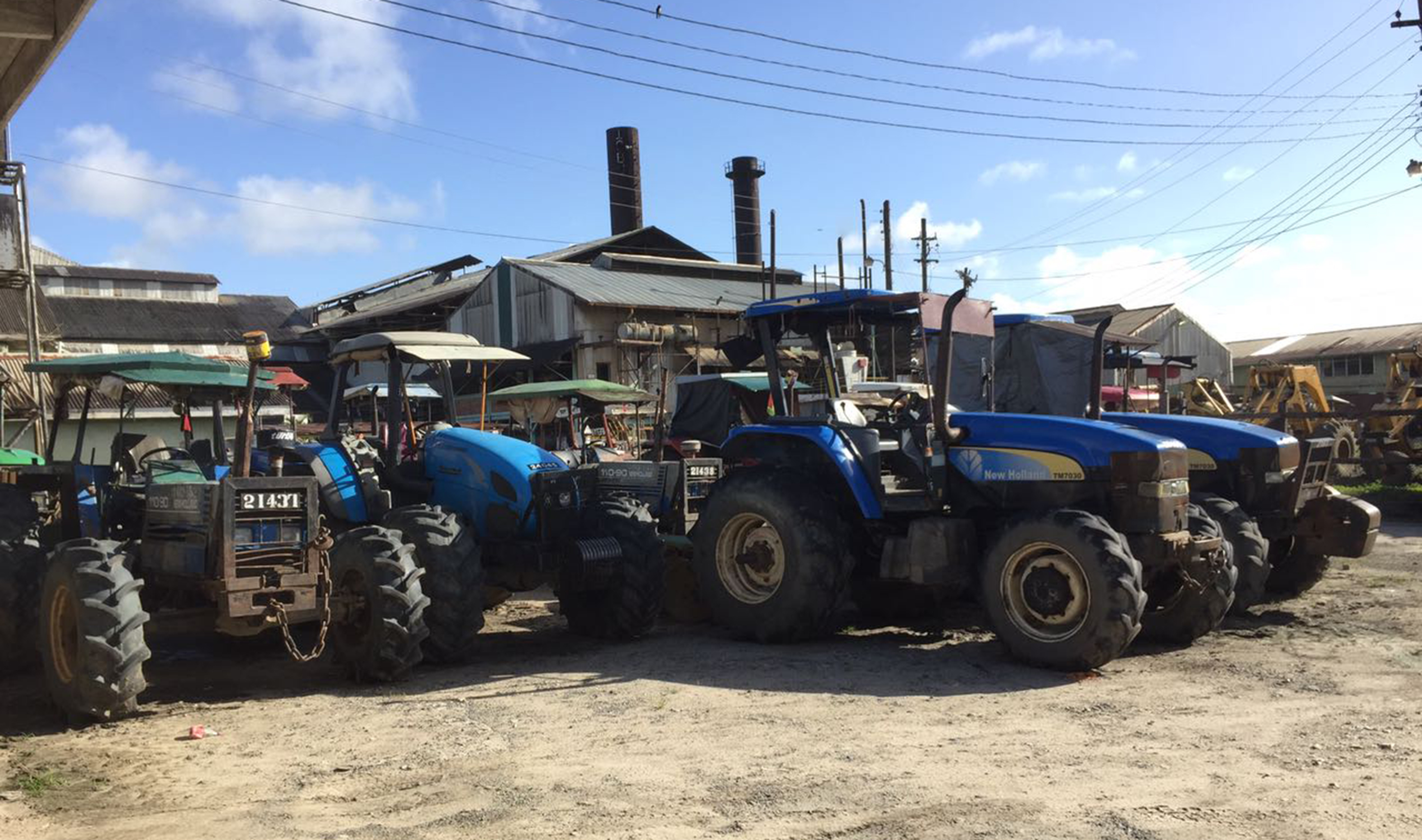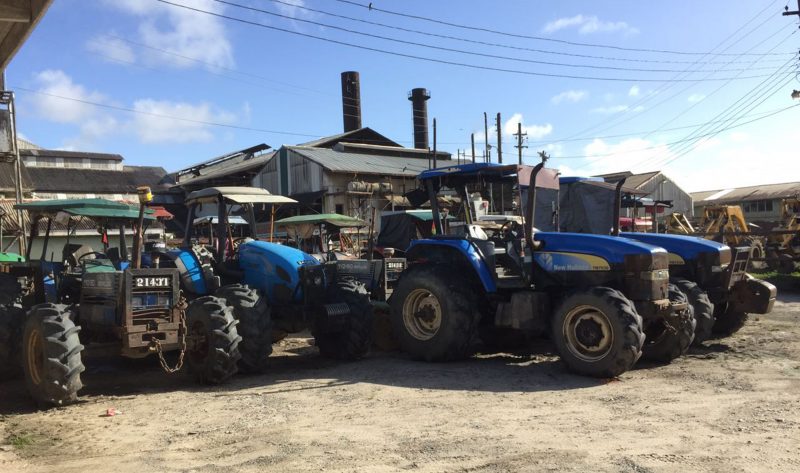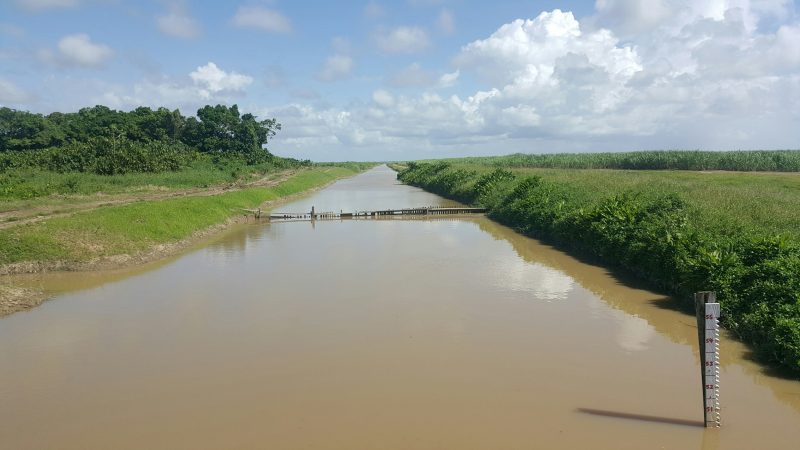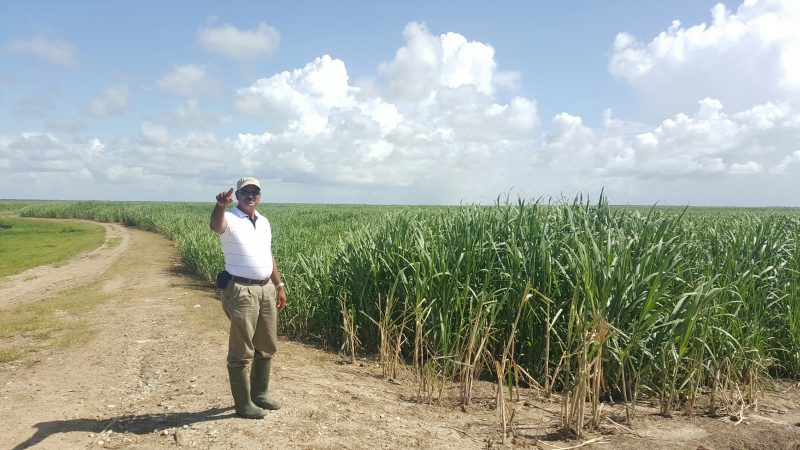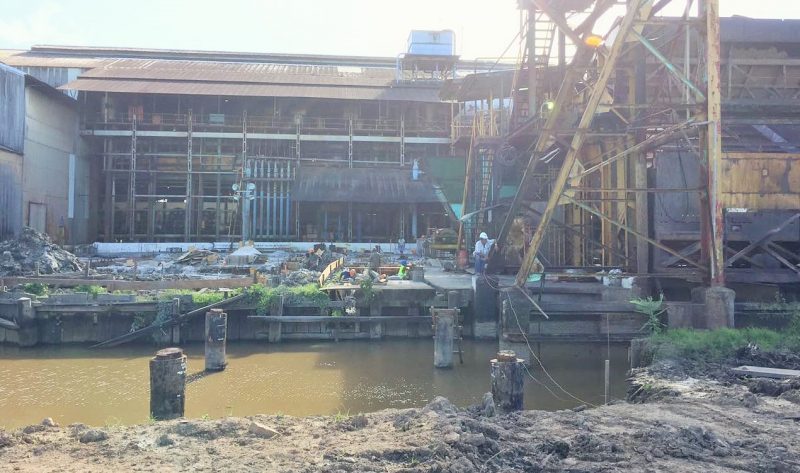In a bid to ensure that the target of 40,000 tonnes of cane for the Uitvlugt Estate Improvement Programme [UEIP] is achieved by 2020, the estate is implementing new strategies, including the planting of “block cane.”
General Manager of the estate, Yudhisthira Mana said that the block cane would span 400 hectares of land and would be better for aerial spraying.
Other advantages of planting on a whole block are that it would “aid in the better pooling of resources and for better crop husbandry management.” There are also plans to regularize the other fields to make them into big blocks.
The field would normally be 15 to 20 hectares and because of poor yield, the harvesting would finish in one day. With the blocking system, the harvesting would take two weeks to finish.
He said that with Uitvlugt being a wet estate, they would “focus on flood fallow and better weed control.” They would also concentrate on better ratoon productivity
GuySuCo is investing $1.5B in the UEIP and would be leasing half of it cultivation to private farmers who would be supplying cane to the factory.
Approval has been given for almost 1,000 hectares of land to be leased to farmers while another 1,000 hectares was sent for consideration. Other farmers have expressed interest in coming on board. Mana said too that farmers have already been leasing about 750 hectares of land.
Farmers from Wales and Canal No 1 Polder are also expected to supply cane to Uitvlugt and preparations are being made for them to park their trailers as they wait to discharge.
Work is also underway to accommodate the cane gantry that would be relocated from the Wales estate. The gantry has already been dismantled
Other projects, he said, would be to rehabilitate dams and develop dam beds, rehabilitate abandoned fields, as well as the overall improvement of the fields, waterways and cultivations.
During a tour of the estate recently, Mana told Stabroek News [SN] that the ratoon cycle has declined by 20 to 25 percent and this has resulted in the decrease of the yield.
According to him, the ratoons are expected to last for about five crops and if it goes beyond that the yield would be poor.
The normal yield for a small field would be about 20 to 25 tonnes of cane. Mana said that they had gotten a poor yield of 15 tonnes of cane per hectare and those fields had to be abandoned.
According to him, the cane would take about 11 to 12 months to mature and some of the new cane would be ready for harvesting by the next crop.
Mana told this newspaper too that to maintain a high yield, they would have to ensure that they “don’t plant out of the planting season or we would end up harvesting in the rain.”
He is encouraging the cane-harvesters and cane transporter operators from the Wales estate to “come on board.”
Emphasizing the need for the workers of the Wales estate to be part of the improvement programme, he said more workers are needed so as to achieve the target of 40,000 tonnes by 2020. He said too that if the cane is not planted on time, it would have to be harvested earlier than maturity.
GuySuCo has advertised 406 vacancies for the UEIP in the agriculture department for 298 cane harvesters, 48 planters, 15 chemical weed control hands, 12 rangers and seven harvesting support hands, six field inspection/agronomy hands, six pest control hands, five shovel men, five fertilizer hands and four cane transport operators.
Mana told SN that through the advertisement, they have so far recruited 21 new workers, although there were just a few cane-cutters. He is hopeful that closer to the crop more cane-cutters would come forward.
With regards to the workers refusing to travel the distance to Uitvlugt based on the 10-mile radius stipulated in the Termination of Employment & Severance Pay Act, Mana had told this newspaper that they would be paid a two-hour disturbance allowance.
He said too that the travelling is “nothing new” and “nothing too big to ask” because over 50 workers have been travelling to Uitvlugt.
